Seven stages that could decide the 2017 Tour de France
Chris Froome will be happy with the revealed route of the 2017 Tour de France, although the fewer mountains on offer could bring a few other contenders into the mix
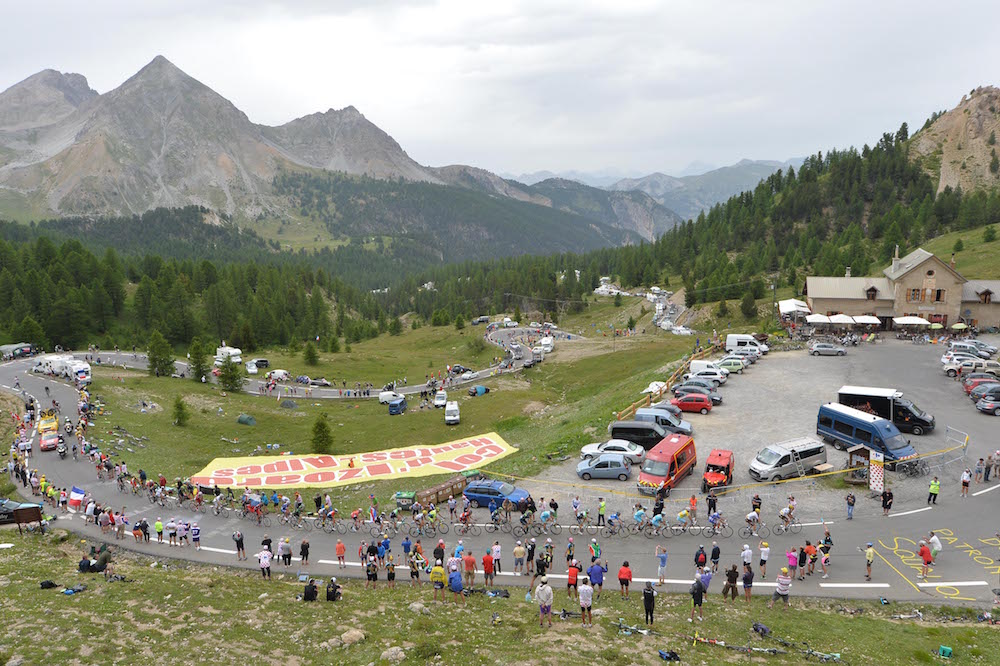
The peloton on the Col d'Izoard (Sunada)
Stage five: Vittel - La Planche des Belles Filles
While stage three could see a rider like Chris Froome or Alejandro Valverde move into the yellow jersey, with an Ardennes-esque finish in Longwy, it will be stage five where the first mountain test comes.
Like in 2016, the first summit finish occurs midway through the first week, but that edition the first summit finish involves a pretty serious climb - one which Froome knows very well.
Froome won atop Les Planche des Belles Filles in 2012 when Sir Bradley Wiggins won Britain's first Tour de France. Since then, Froome has gone on to win three Tours of his own, including the last two editions.
Winning in the Vosges again could be the start of Froome's hattrick, or will one of his rivals take an early opportunity to dent his yellow jersey charge?
Stage nine: Nantua - Chambéry
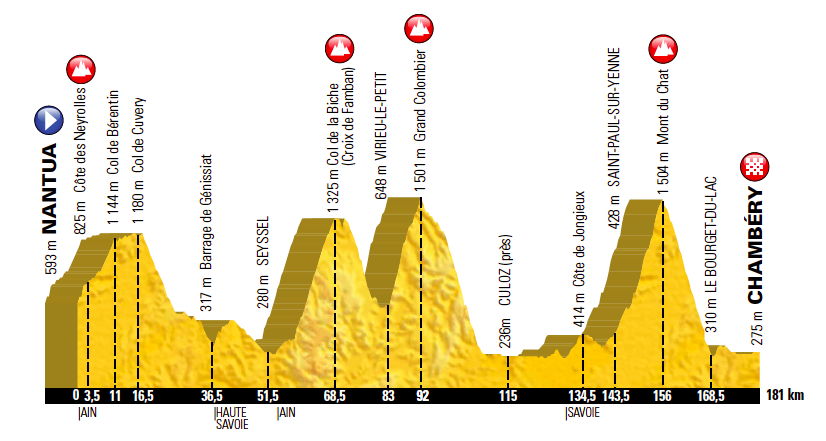
Mountain stages before rest days are usually pretty exciting and the route planners have certainly given the riders a stage that they'll need a rest after.
A short climb out of the gate is followed by two tough climbs of the Col de la Binche and Grand Colombier in the middle of the stage and the brutal Mont du Chat immediately before the finish in Chambéry.
>>> Tour de France 2017 route revealed
Get The Leadout Newsletter
The latest race content, interviews, features, reviews and expert buying guides, direct to your inbox!
The Col de la Binche averages nine per cent over 10.5km with a descent to the foot of the Grand Colombier, which reaches 22 per cent at around the halfway mark and averages just shy of 10 per cent for 8.5km.
That's tough, but the Mont du Chat may trump the both of them, averaging 10.3 per cent over 8.7km. It's a pretty steady gradient, but with ramps of 14 and 15 per cent at the midway point and continuing to be relentlessly steep all the way to the summit.
Stage 12: Pau - Peyragudes
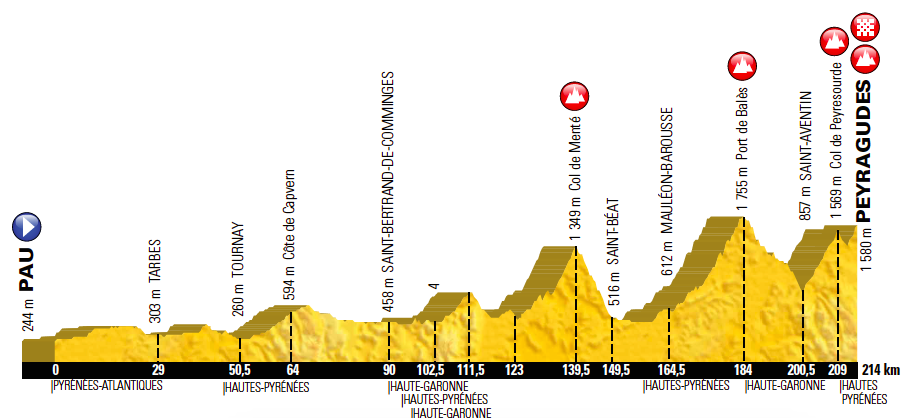
The first 150km of this first Pyrénéean stage are pretty straightforward, but the final 60-odd could be where the GC battle comes to life.
The long climb of the Port de Bales is followed by an even longer descent before the climb of the Col de Peyresourde and the short by steep climb to the finish in Peyragudes.
>>> Froome pleased with 2017 Tour de France route as organisers try to inspire attacking racing
Froome took the yellow jersey on the Peyresourde stage in 2016, attacking over the top of the climb and taking the slender lead all the way to the end. This year the race goes up the side he attacked down, so we may not see the same kind of fireworks again.
The three kilometre ramp to the finish is characterised by a 13 per cent final burst to the line. It'll probably be a day for the breakaway, but the GC battle behind could also see a shake-up.
Stage 13: Saint-Girons - Foix
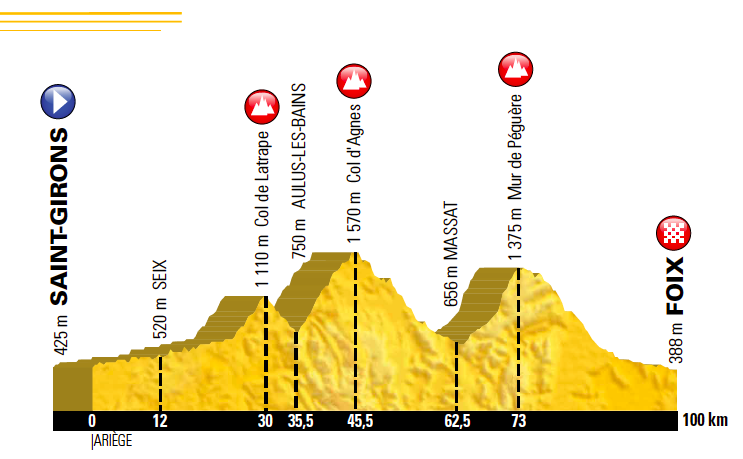
Looking at the profile alone, this stage doesn't look particularly impressive. Three climbs, one of which isn't particularly challenging, and a downhill finish.
But when you take into account that the day is only 100km long, that changes everything. We've been blessed with short mountain stages in the last few Grand Tours, but none as short as this.
Looking at the profile, there doesn't appear to be a kilometre of flat road on the stage with a drag up to the foot of the Col de Latrape climb. The descent from there goes straight into the long, and reasonably steep Col d'Agnes, which is followed by nearly 20km of downhill.
The climb of the Mur de Péguère takes place over nearly 10km before a 27km sprint downhill to the finish in Foix. If the racing is like the Dolomites stage of the 2016 Giro d'Italia, this stage could be a game changer. An attack on the Péguère by a rider with good descending skills could see them stay away and gain quite an advantage on the run to Foix.
Stage 17: La Mure - Serre Chevalier
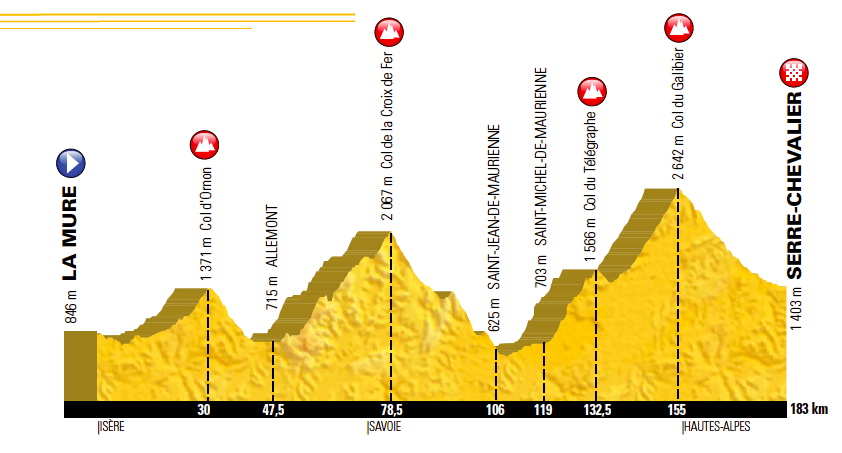
In a race devoid of big-name mountains, fans have to wait until stage 17 to see some of the Tour de France big dogs. The Col du Galibier rears its ugly head on a day that includes 58.7km of climbing - more than a quarter of the route involves riding up a mountain.
Of course, to get over the Galibier, you've got to climb the Col du Télégraphe beforehand, which is a pretty decent test in its own right. All of that comes in the final 80km of the stage, before which the peloton will climb the staggeringly long Col de la Croix de Fer.
It only averages 5.2 per cent on paper, but that's because it has two short downhill sections on its 24km. There's a lovely cafe at the top, though, if anyone needs some refreshments after the climb.
The descent down to the Maurienne valley is pretty technical, but it's probably a bit early in the stage for any attacks to go, though.
Stage 18: Briançon - Col d'Izoard
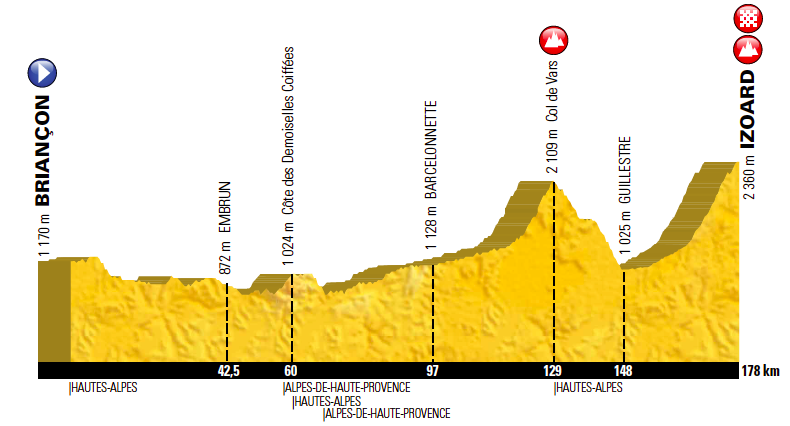
The final summit finish before Paris sees the race finish on top of the Col d'Izoard for the first time in Tour de France history. We didn't see much in the way of attacking in the final stages of the 2016 race, but the tough climb up the Izoard could see a few moves made by those riders looking to gain some time back on the GC.
If Froome is in the lead by this point you'd have to hope that riders like Nairo Quintana would put in a few digs up the Izoard. And even if Froome is not in the lead, the poorer time triallists in the peloton will have to put some more time into Froome to take into the penultimate stage.
Stage 20: Marseille - Marseille
At 23 kilometres, the final time trial might not be long enough to put minutes into other riders, but should the GC riders be separated by a matter of seconds by this point.
We've not seen the parcours of the 23km yet, but if it's flat it plays perfectly into Froome's hands, especially if he's battling someone like Quintana for yellow. It could also be good for Richie Porte if the Australian can overcome his three-week woes and be in contention by the penultimate stage.

Thank you for reading 20 articles this month* Join now for unlimited access
Enjoy your first month for just £1 / $1 / €1
*Read 5 free articles per month without a subscription

Join now for unlimited access
Try first month for just £1 / $1 / €1
Stuart Clarke is a News Associates trained journalist who has worked for the likes of the British Olympic Associate, British Rowing and the England and Wales Cricket Board, and of course Cycling Weekly. His work at Cycling Weekly has focused upon professional racing, following the World Tour races and its characters.
-
 Gear up for your best summer of riding – Balfe's Bikes has up to 54% off Bontrager shoes, helmets, lights and much more
Gear up for your best summer of riding – Balfe's Bikes has up to 54% off Bontrager shoes, helmets, lights and much moreSupported It's not just Bontrager, Balfe's has a huge selection of discounted kit from the best cycling brands including Trek, Specialized, Giant and Castelli all with big reductions
By Paul Brett
-
 7-Eleven returns to the peloton for one day only at Liège-Bastogne-Liège
7-Eleven returns to the peloton for one day only at Liège-Bastogne-LiègeUno-X Mobility to rebrand as 7-Eleven for Sunday's Monument to pay tribute to iconic American team from the 1980s
By Tom Thewlis